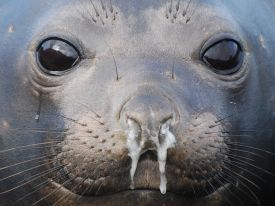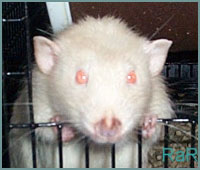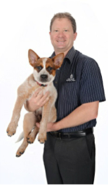We’ve all seen or heard about arthritis in our grannies and grandpas, maybe experienced some of it ourselves, but what about our furry friends? I doubt many people have seen a kitty cat hopping over the fence with a walking stick or a labrador retriever with a walker… Does it really happen in our pets? You bet it does! Have a little read and you may be surprised by what you find out….

What are Arthritis and Degenerative Joint Disease (DJD)?
By definition, arthritis is inflammation in the joint and DJD refers to the progressive degenerative processes that result in pathology in a joint, like worn down cartilage and cartilage flaps and fragments (joint mice), bone chips and fragments (also joint mice or osteophytes), too little joint fluid, excessive bone laid down where it normally would not be (bone spurs) and bone wearing on bone. These are painful conditions and in order for us to imagine what a beloved pet may feel like, all we have to do is ask a friend, neighbour or relative who suffers from arthritis, to know that it’s pretty uncomfortable. The most common form of arthritis is very similar to that seen in most people, which is due to “wear and tear” of the joints over time, and therefore is seen mainly in older animals. Larger dogs seem to be more affected, however it does occur in small dogs and cats but is much harder to detect. It may involve just one joint, or many throughout the body. Occasionally it is seen in younger animals if they’ve had a joint injury, joint surgery, or if they have a congenital or hereditary joint abnormality. There are also rare forms of autoimmune arthritis (e.g. Rheumatoid arthritis). (Diagram from abc.net.au)
What should I look out for?
These signs are not specific to arthritis but when several of them occur together, there’s a pretty good indication that your pet may be suffering with arthritis:
- Limping
- Difficulty rising, standing or sitting
- Slowness and/or reluctance to get up
- Decrease in activity
- Decrease in interacting with family or other pets
- Disinterest in activities he/she used to enjoy e.g. dogs playing fetch or cats playing with dangly toys.
- Hesitancy in jumping up or down, running or climbing stairs
- Change in temperament – becomes grumpy or aggressive
- Sleeping more
- Decrease in appetite
- Weight gain
- Appears stiff or sore, even if they seem to improve after warming up
How is arthritis/DJD diagnosed?
A clinical exam along with a thorough history of his/her clinical signs seen at home, will give the examining veterinarian a pretty good idea that arthritis is a possibility. During the exam the vet may feel fluid or boney swellings around the joint, crunching or clicking sounds when the joint is moved. He or she may also find there’s been muscle wasting because of reduced weight bearing and limb use. Radiographs (X-rays) may be needed to visualise boney changes, to make a definitive diagnosis and exclude other diseases that may occur in bones close to joints.  (Diagram from glucosamine-arthritis.org)
(Diagram from glucosamine-arthritis.org)
Once a preliminary diagnosis is made, we advise owners to trial their pets on a 1-2 week course of strong anti-inflammatory pain relieving medication, even if this is not used long-term. The medications (referred to as NSAIDS) will help to show just how much pain is being caused by the arthritis and gives us a goal for therapy. The fact is, many owners with arthritic pets will not recognise the signs of arthritis, or will consider them to be part of the ageing process. It is not until the pain is blocked out with medications that the debilitating nature of this disease can be realised.
What can be done?
Effective relief of pain caused by arthritis uses a multi-pronged attack to get the most successful outcome.
- Healthy Weight: THIS IS THE MOST IMPORTANT AND EFFECTIVE, NON-DRUG NATURAL THERAPY WE HAVE AVAILABLE FOR OUR ARTHRITIC PETS. Body weight is a simple equation of energy in, versus energy out, and so to be unapologetically blunt, if your pet is overweight then, as the one with the opposable thumbs, YOU (their owner) are giving them TOO MUCH FOOD for their current level of activity and making their arthritis, and therefore their pain worse. The solution is also thankfully simple: a strict diet, no treats, gentle exercise in most cases, and letting us be your pet’s diet coach. Far from being cruel, this will be the best thing you can do for your pet. As you start to see the weight come off, the arthritic pain will lessen and their level of activity will increase. It is the absolute minimum that must be done for all arthritic patients!
- Pain Medications: Non-steroidal anti-inflammatory drugs (NSAIDs) are the most commonly used pain medications. They settle the inflammation that is causing cartilage damage and provide immediate relief from pain. There are several different NSAID options and we recommend the new generation NSAID’s, including Onsior for dogs and Metacam for cats, since they are unique in their mode of action in that common gastrointestinal side effects of NSAID’s are largely eliminated. These are also the drugs we use for treatment trials and the benchmark against which we measure other therapies. For dogs we recommend a blood test every 6 months to monitor any changes to liver or kidney function. For cats, these tests must be done every 6 months since they are usually more susceptible to undetected kidney problems. Other drugs, including cortisone and morphine-type drugs, may be used in particular circumstances.
- Chondro-protectives: over-the-counter supplements containing Pentosan Polysulphate, Omega 3 fatty acids, glucosamine and chondroitin sulphate. They are non-prescription remedies that help to rebuild and heal damaged cartilage and can be a longterm strategy in helping improve arthritic pain. Pentosan is an injection that goes under the skin (not into the joint) that helps the cartilage producing cells make more cartilage “factories”, and glucosamine/chondroitin supplements supply the building blocks to those cartilage factories. Each of these remedies has an effect on cartilage regeneration when working alone but will work better when used together. They also work better in the early stages of arthritis but even in severe cases may help reduce the dose of NSAIDs required to alleviate pain. We currently recommend the “PAW Osteosupport” brand.
- Special Diets: veterinary prescription diets are also part of the arthritis management arsenal. They ensure the arthritic patient receives the correct levels of energy, protein, vitamins and minerals as well as additional supplements such as Omega 3s, glucosamine and chondroitin all in an easy to feed ration. Hills JD Prescription diet is the one that we recommend.
- Physiotherapy and hydrotherapy: swimming is especially good for arthritic dogs since the exercise strengthens their muscles but there’s very little strain put on the joints because the water supports the animal’s body.
IMPORTANT: NEVER give your pet any human medication without checking with your vet first! Some human drugs e.g. paracetamol and ibuprofen can cause very serious illness and even death!
Summary
- Arthritis is common.
- It can occur in dogs and cats of all ages and sizes
- It causes chronic pain that may only be seen at its most severe.
- Treatment should be directed at controlling this disease at its earliest possible signs as this already represents significant progression of joint disease.
Recognising that our arthritic pets do not need to suffer pain, especially in their older years, and using a combined approach of weight loss, remedies to repair cartilage and drugs to control inflammation and pain, will go along way to ensuring that they enjoy a very high quality of life without you worrying that they may not be telling you about their chronic pain.
Remember, if your pet is diagnosed with arthritis, always discuss with your vet any changes to your pet’s behaviour, difficulties you’re having with medicating, feeding or exercising your pet. He or she is there to help you and your pet find a programme that helps your four-legged friend get the best out of life.
Please contact us to make an appointment to check out your furry friend and discuss your concerns: Call (07) 3266 9992 or pop in at Northgate Veterinary Surgery, 113 Ridge Street, Northgate. http://www.northgatevet.com.au







 (Diagram from glucosamine-arthritis.org)
(Diagram from glucosamine-arthritis.org)